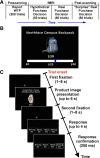Hypothetical and real choice differentially activate common valuation areas
- PMID: 21228156
- PMCID: PMC6623437
- DOI: 10.1523/JNEUROSCI.1583-10.2011
Hypothetical and real choice differentially activate common valuation areas
Abstract
Hypothetical reports of intended behavior are commonly used to draw conclusions about real choices. A fundamental question in decision neuroscience is whether the same type of valuation and choice computations are performed in hypothetical and real decisions. We investigated this question using functional magnetic resonance imaging while human subjects made real and hypothetical choices about purchases of consumer goods. We found that activity in common areas of the orbitofrontal cortex and the ventral striatum correlated with behavioral measures of the stimulus value of the goods in both types of decision. Furthermore, we found that activity in these regions was stronger in response to the stimulus value signals in the real choice condition. The findings suggest that the difference between real and hypothetical choice is primarily attributable to variations in the value computations of the medial orbitofrontal cortex and the ventral striatum, and not attributable to the use of different valuation systems, or to the computation of stronger stimulus value signals in the hypothetical condition.
Figures





References
-
- Anderson AK, Christoff K, Stappen I, Panitz D, Ghahremani DG, Glover G, Gabrieli JD, Sobel N. Dissociated neural representations of intensity and valence in human olfaction. Nat Neurosci. 2003;6:196–202. - PubMed
-
- Ariely D, Wertenbroch K. Procrastination, deadlines, and performance: self-control by precommitment. Psychol Sci. 2002;13:219–224. - PubMed
-
- Becker GM, DeGroot MH, Marschak J. Measuring utility by a single-response sequential method. Behav Sci. 1964;9:226–232. - PubMed
-
- Blumenschein K, Blomquist GC, Johannesson M, Horn N, Freeman P. Eliciting willingness to pay without bias: evidence from a field experiment. Econ J. 2007;118:114–137.
-
- Carson RT, Flores NE, Martin KM, Wright JL. Contingent valuation and revealed preference methodologies: comparing the estimates for quasi-public goods. Land Econ. 1996;72:80–99.
Publication types
MeSH terms
LinkOut - more resources
Full Text Sources
